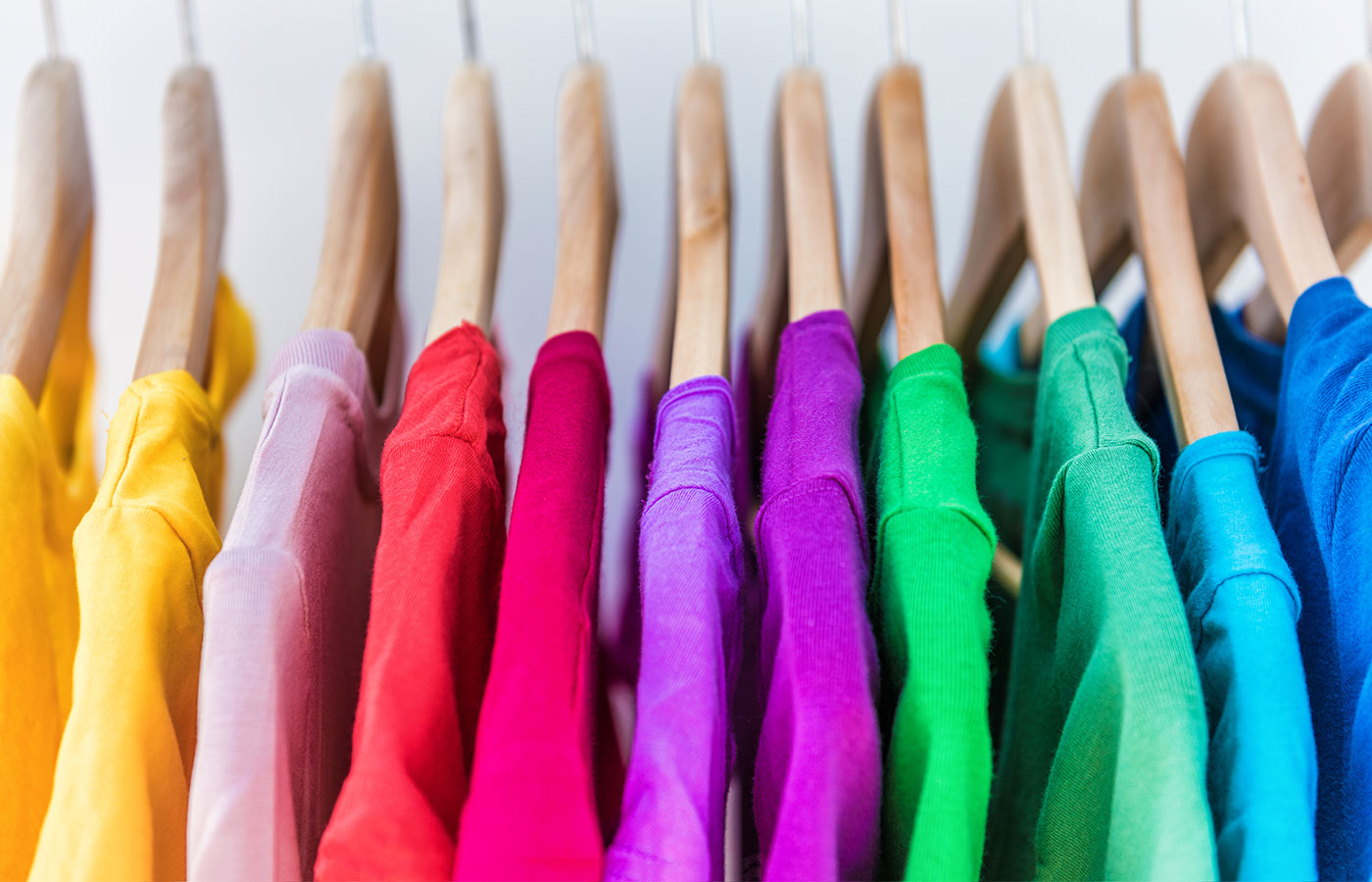Why Fashion Experts Prefer Specific Fabrics in Branded Clothing Lines
Wiki Article
The Value of Lasting Garments: Just How It Influences the Setting and Your Closet
Sustainable clothes is progressively acknowledged for its essential role in minimizing the ecological influence of the quick garment industry. By concentrating on eco-friendly materials and honest manufacturing methods, it attends to pressing eco-friendly worries. This change not only profits the world however additionally affects consumer choices, leading to a more thoughtful method to closet management. Understanding these dynamics elevates essential questions about fashion's future and personal obligation fit it.The Ecological Impact of Rapid Style

Benefits of Lasting Products
Lasting materials use considerable advantages, specifically via environment-friendly fabric choices that decrease environmental harm. These materials also demonstrate toughness and durability, minimizing the requirement for constant replacements. Therefore, they add to a much more sustainable apparel industry and advertise responsible consumer behavior.Eco-Friendly Fabric Choices
While the fashion business has long been connected with quick fads and environmental damage, the rise of environmentally friendly fabric selections offers a transformative opportunity. Sustainable materials such as natural cotton, hemp, and Tencel have actually gotten popularity due to their lower environmental effect. These textiles are typically produced without dangerous chemicals and require much less water, decreasing their carbon impact - Branded Clothing. Additionally, lots of eco-friendly materials are eco-friendly, adding to a circular economic climate by minimizing waste. Choosing lasting materials not only sustains environmentally responsible practices but also advertises much healthier environments. As consumers become a lot more conscious of their purchasing power, the need for environment-friendly fabrics motivates brand names to introduce and embrace even more sustainable production methods, ultimately profiting the planet and future generations
Resilience and Long Life Advantages
Many consumers are progressively acknowledging the resilience and longevity advantages of sustainable products in their clothing options. Unlike traditional materials, lasting materials such as natural cotton, hemp, and recycled polyester are crafted to endure wear and tear, causing garments that last longer. This reduced regularity of substitute not only conserves consumers cash with time but additionally diminishes waste created by fast style. On top of that, sustainable apparel commonly employs green production methods that improve textile toughness, adding to a decrease in the overall carbon impact. By purchasing resilient clothes, consumers can grow an extra sustainable closet while enjoying top quality pieces that preserve their visual and capability in time. As a result, durability and longevity stand as essential advantages of choosing lasting products.Lowering Waste Through Sustainable Practices
Decreasing waste in the style sector can be achieved with innovative methods such as upcycling and repurposing products. Additionally, adopting minimal closet strategies motivates customers to focus on top quality over amount, inevitably reducing clothing usage. With each other, these strategies contribute considerably to a more sustainable clothes model.Upcycling and Repurposing Products
Upcycling and repurposing materials have emerged as innovative methods in the fashion business, changing disposed of fabrics right into beneficial new products. This approach not only decreases waste but likewise urges creative thinking and individuality in clothes style. By taking old garments and products, designers can create unique pieces that reflect personal design while decreasing the demand for brand-new sources. In addition, upcycling often needs less energy and water contrasted to conventional manufacturing procedures, considerably reducing the ecological footprint of style. As customers become extra familiar with sustainability, the popularity of upcycled clothing remains to increase, advertising a round economy. Ultimately, these practices add to a more sustainable future, where style prioritizes ecological health over quick manufacturing and intake.
Minimal Closet Methods
As individuals significantly seek to reduce their ecological effect, taking on minimal wardrobe methods has gotten grip as a reliable method to sustainable fashion. These approaches emphasize high quality over amount, encouraging customers to curate a smaller sized collection of flexible, sturdy garments. By concentrating on classic pieces that can be blended and matched, individuals can reduce the frequency of purchases and inevitably reduce waste.Additionally, minimalism advertises mindful intake, prompting shoppers to assess the ecological and honest ramifications of their selections. This method not only cultivates a more sustainable lifestyle however also simplifies everyday decision-making concerning outfit. As individuals accept minimal concepts, they add to a fashion culture that values sustainability and responsible consumerism, ultimately bring about an extra eco-conscious society.The Duty of Moral Labor in Sustainable Style
While lots of customers are progressively knowledgeable about the environmental effects of their garments choices, the significance of moral labor methods in sustainable style can not be overlooked. Honest labor encompasses reasonable salaries, safe working conditions, and respect for workers' legal rights, forming the foundation of accountable fashion production. Brands that prioritize moral labor not only boost communities yet also set a standard for responsibility in the industry.Moreover, the combination of honest techniques promotes openness, allowing consumers to make enlightened selections concerning their purchases. This method contrasts dramatically with quick fashion's unscrupulous labor models, which commonly focus on profit over people. By supporting firms committed to moral labor, consumers contribute to a system that values human dignity alongside environmental sustainability. Consequently, moral labor is not simply an add-on; it is necessary to the broader goal of lasting fashion, making certain that the mission for eco-friendliness does not come with the cost of human legal rights.The Influence of Lasting Apparel on Carbon Emissions
Sustainable garments has the prospective to greatly lower carbon exhausts related to the garment industry. Standard garment manufacturing contributes notably to greenhouse gas discharges, mostly due to energy-intensive production procedures and using non-renewable resources. In contrast, sustainable style focuses on eco-friendly materials, such as natural cotton or recycled fibers, which often call for less power to produce.Moreover, lasting brand names have a tendency to embrace extra reliable manufacturing practices, reducing waste and reducing general emissions. By prioritizing durability and classic design, sustainable clothing motivates customers to buy less often, more reducing the carbon impact related to overconsumption.Additionally, numerous lasting brands are dedicated to transparency in their supply chains, making it possible for customers to make educated selections that align with their worths. Ultimately, moving in the direction of lasting apparel can bring about a significant reduction in carbon discharges, adding to a much healthier world and a much more sustainable future for the apparel industry.Sustaining Regional Economies With Lasting Choices
The shift toward sustainable apparel not just addresses environmental worries but additionally substantially benefits local economic situations. By choosing sustainable style, consumers commonly sustain tiny businesses and regional craftsmens, enhancing community durability. These ventures normally operate a smaller sized scale, prioritizing workmanship and honest practices over mass production.Investing in locally made lasting garments promotes work development and stimulates economic development within areas. As customers become more knowledgeable about the ecological effect of their purchases, they significantly choose products that show their values. This need encourages neighborhood makers to adopt sustainable practices, adding to a round economy.Moreover, sustaining neighborhood businesses reduces transportation emissions, lining up with eco-conscious customer habits. The interconnectedness of sustainable clothes and local economic climates highlights the vital role that individual selections play in advertising both environmental and economic health and wellness. By promoting these regional connections, neighborhoods can grow while also functioning towards an extra why not look here lasting future.Transforming Your Closet: Tips for a Lasting Closet
As people seek to lower their environmental effect, transforming a storage room into a sustainable closet comes to be an essential step. One efficient strategy is to examine existing clothes, keeping just products that are worn consistently which straighten with sustainability objectives. Focusing on top quality over quantity is vital; purchasing resilient items from green brand names can substantially lower waste.Additionally, integrating second-hand products can rejuvenate a wardrobe while lessening environmental damages. Organizing clothes swaps with pals or donating extra items can further advertise sustainability.When shopping, people ought to seek products that are natural, recycled, or biodegradable, and stay clear of quick style merchants - Branded Clothing. Lastly, practicing conscious consumption by attentively taking into consideration each acquisition can add to a more lasting lifestyle. By applying these tips, one can produce a wardrobe that reflects personal style while supporting ecological stewardshipOften Asked Concerns
Just How Can I Determine Sustainable Garments Brands?
To determine lasting garments brands, one must investigate products utilized, examine moved here for certifications like Fair Profession, and examine the brand's transparency regarding their manufacturing procedures, labor methods, and ecological impact, guaranteeing eco-friendly and moral techniques are focused on.What Are the Costs Connected With Lasting Fashion?
The expenses linked with sustainable style can vary significantly. Greater production costs, moral sourcing, and eco-friendly materials frequently lead to enhanced market prices, which may hinder some customers while attracting ecologically mindful consumers.Can Lasting Apparel Be Stylish and fashionable?
Lasting clothes can certainly be fashionable and fashionable. Developers progressively focus on innovative products and honest manufacturing approaches, showing that fashion and sustainability can exist together. Consumers currently have varied choices that blend visual appeals with environmental consciousness.How Does Washing Clothing Affect Their Sustainability?
Cleaning clothes greatly effects sustainability by consuming water and energy, adding to contamination, and creating microplastic launch. Frequent washing can degrade textiles, reducing their lifespan and raising the demand for substitutes, eventually exacerbating ecological issues.What Is the Life Expectancy of Lasting Clothing Compared to Quick Fashion?
The life-span of sustainable clothing typically goes beyond that of rapid style items, usually long lasting a number of years because of top quality materials and craftsmanship. On the other hand, rapid style garments may weaken promptly, necessitating more regular replacements. Lasting apparel is progressively acknowledged for its critical role in lessening the environmental impact of the quick style market. While many consumers are significantly aware of the environmental repercussions of their clothing choices, the importance of moral labor practices in sustainable fashion can not be forgotten. Branded Clothing. Lasting garments has the potential to significantly minimize carbon discharges connected with the style industry. In comparison, lasting style focuses on green materials, such as natural cotton or recycled fibers, which usually require much less power to produce.Moreover, sustainable brands often tend to embrace a lot more reliable manufacturing practices, minimizing waste and lowering general emissions. By prioritizing resilience and ageless style, sustainable apparel encourages consumers to get less often, more decreasing the carbon footprint linked with overconsumption.Additionally, lots of lasting brand names are devoted to transparency in their supply chains, pop over to these guys enabling consumers to make informed choices that align with their worthsReport this wiki page